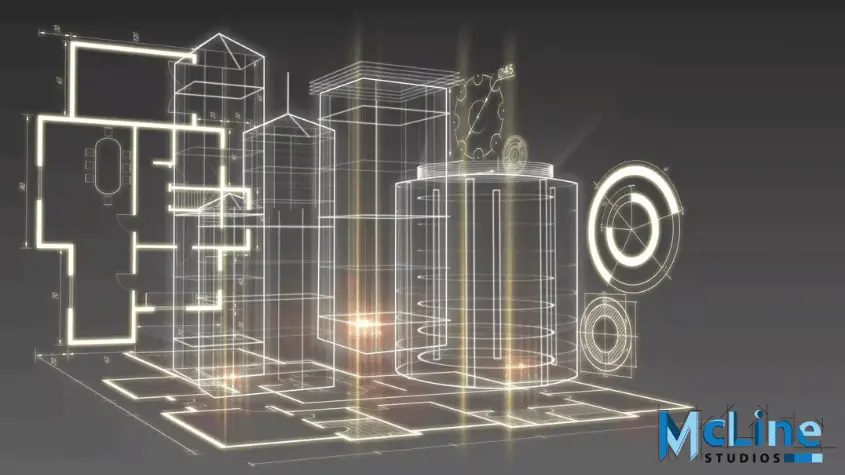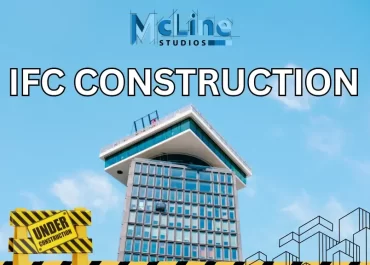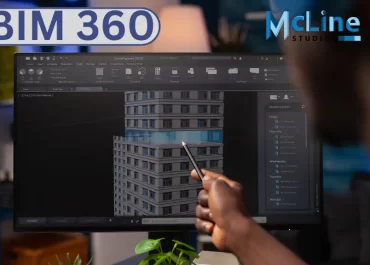BIM (Building Information Modeling) is a digital representation of a building’s physical and functional characteristics. It serves as a shared knowledge resource, facilitating collaboration among architects, engineers, contractors, and stakeholders throughout the design, construction, and operation phases of a project.
BIM replaces traditional 2D drawings with intelligent 3D models, enabling virtual simulations, clash detection, cost estimation, and performance analyses. This integrated approach enhances coordination, reduces errors and rework, optimizes design solutions, and minimizes material waste.
The adoption of BIM in architectural design offers numerous advantages, including improved visualization, efficient project coordination, accurate quantity takeoffs, and the ability to evaluate design alternatives before construction.
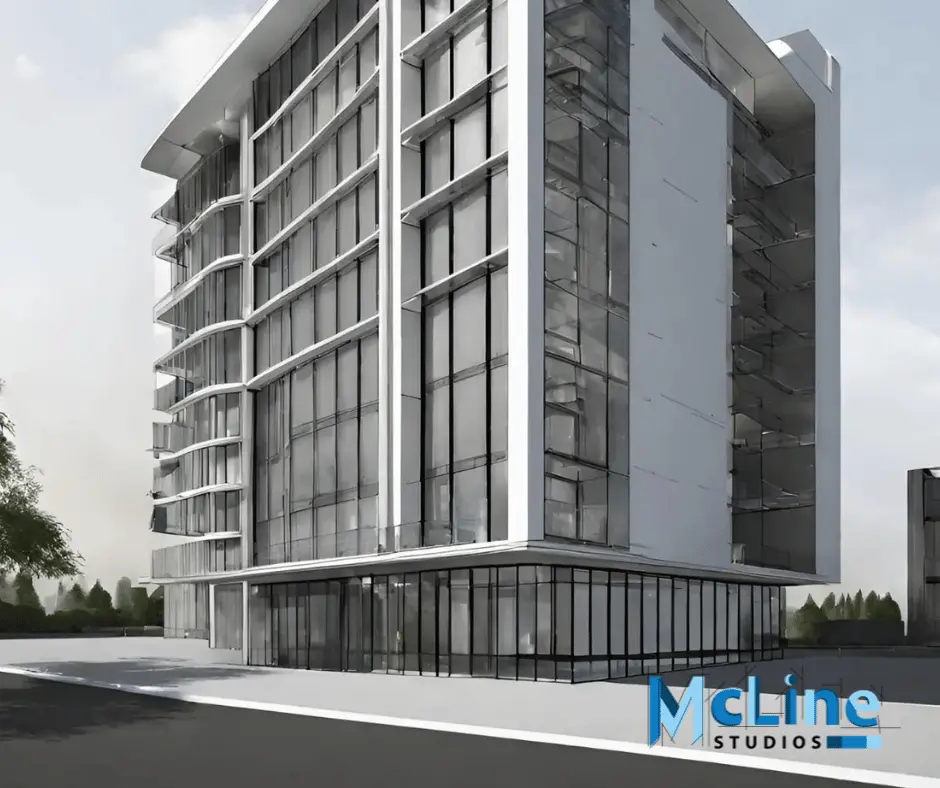
Advantages Of BIM Modeling Services In Architectural Design
Building Information Modeling (BIM) offers several advantages in architectural design:
- Improved Collaboration: BIM facilitates collaboration among architects, engineers, contractors, and other stakeholders by providing a centralized platform for sharing and accessing project information. This leads to better coordination and fewer errors during the design and construction phases.
- Visualization Of Design: BIM enables architects to create detailed 3D models of buildings, allowing stakeholders to visualize the project more accurately. This helps in making informed decisions about design elements, materials, and spatial relationships.
- Efficient Design Process: BIM streamlines the design process by allowing architects to iterate quickly and explore different design options digitally. Changes made in one part of the model automatically update throughout the project, saving time and reducing errors.
- Data Integration: BIM integrates various types of data, including geometric, spatial, and non-graphical information such as cost and scheduling data. This comprehensive approach enables architects to make more informed decisions throughout the project lifecycle.
- Clash Detection: BIM software can identify clashes or conflicts between different building systems (e.g., structural, mechanical, electrical) early in the design phase, helping to prevent costly rework during construction.
- Quantification and Cost Estimation: BIM allows architects to extract quantities of materials directly from the model, facilitating accurate cost estimation and budgeting. This helps in controlling project costs and avoiding budget overruns.
- Sustainability Analysis: BIM enables architects to perform energy analysis and simulation to evaluate the environmental performance of the building design. This helps in optimizing energy efficiency and meeting sustainability goals.
Challenges With BIM
Building Information Modeling (BIM) offers numerous advantages in architectural design, including improved collaboration, visualization, and efficiency. However, it also presents several challenges:
- Initial Investment: Implementing BIM requires significant upfront investment in software, training, and infrastructure. Small firms, in particular, may find this cost prohibitive.
- Learning Curve: BIM software can be complex, requiring architects and other stakeholders to undergo extensive training to utilize its full potential effectively.
- Interoperability: Compatibility issues may arise when collaborating with stakeholders who use different BIM software platforms or versions. Interoperability standards are improving, but challenges still exist.
- Data Management: BIM generates vast amounts of data, which must be organized, managed, and maintained throughout the project lifecycle. Without proper protocols in place, data fragmentation and loss can occur.
- Standardization: BIM standards vary across regions and disciplines, hindering seamless collaboration and data exchange. Global efforts are underway to establish consistent standards, but progress is slow.
- Data Security: BIM models contain sensitive information about building designs, materials, and systems. Ensuring data security and protecting against cyber threats is essential but challenging.
Potential Future Trends In BIM
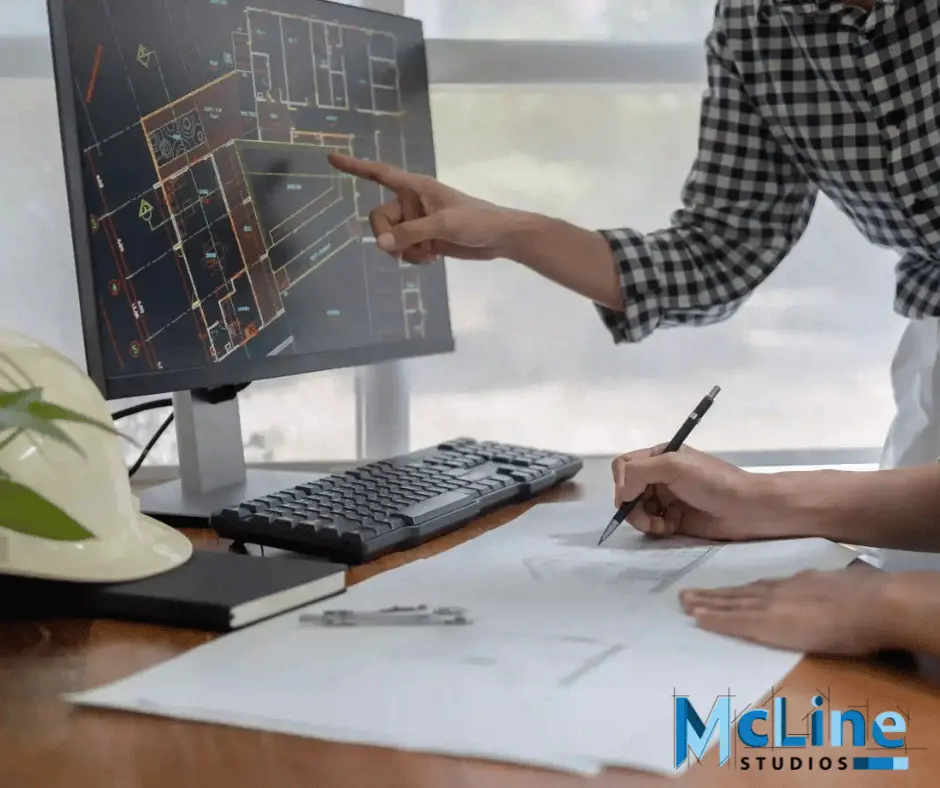
BIM is continuously evolving to meet the demands of the construction industry and advancements in technology. Here are some possible future trends in BIM:
- Integration with Augmented Reality (AR) and Virtual Reality (VR): BIM models can be integrated with AR and VR technologies to provide immersive experiences for stakeholders. This integration allows for better visualization of designs, improved collaboration, and enhanced project understanding.
- Cloud-Based BIM: Cloud technology enables real-time collaboration and data sharing among project stakeholders regardless of their location. This trend is likely to continue, allowing for greater accessibility, scalability, and flexibility in BIM workflows.
- AI and Machine Learning in BIM: AI and machine learning algorithms can be utilized to analyze vast amounts of data generated by BIM models. This can help identify patterns, optimize designs, predict project outcomes, and automate repetitive tasks, thereby increasing efficiency and reducing errors.
- IoT Integration: The Internet of Things (IoT) can be integrated with BIM to capture real-time data from sensors embedded in buildings and construction sites. This data can be used to monitor building performance, improve maintenance strategies, and enhance overall building lifecycle management.
- BIM for Facility Management (FM): BIM models can be extended beyond the design and construction phases to support facility management activities. This includes asset tracking, space management, maintenance scheduling, and energy optimization, leading to improved operational efficiency and cost savings.
- Blockchain for BIM Data Management: Blockchain technology can provide a secure and transparent platform for managing BIM data, ensuring data integrity, traceability, and accountability throughout the project lifecycle. This can help prevent unauthorized modifications and disputes over data ownership.
- Mobile BIM Applications: Mobile BIM applications enable stakeholders to access and interact with BIM models on smartphones and tablets, providing on-the-go access to project information and enhancing communication and collaboration in the field.
Final Thoughts
As the construction industry continues to adopt digital transformation, BIM has become an indispensable tool for delivering complex projects on time, within budget, and with reduced environmental impact.
The ability to visualize and analyze a building’s lifecycle, from material selection to energy consumption, allows stakeholders to make informed decisions that prioritize sustainability and long-term value.

